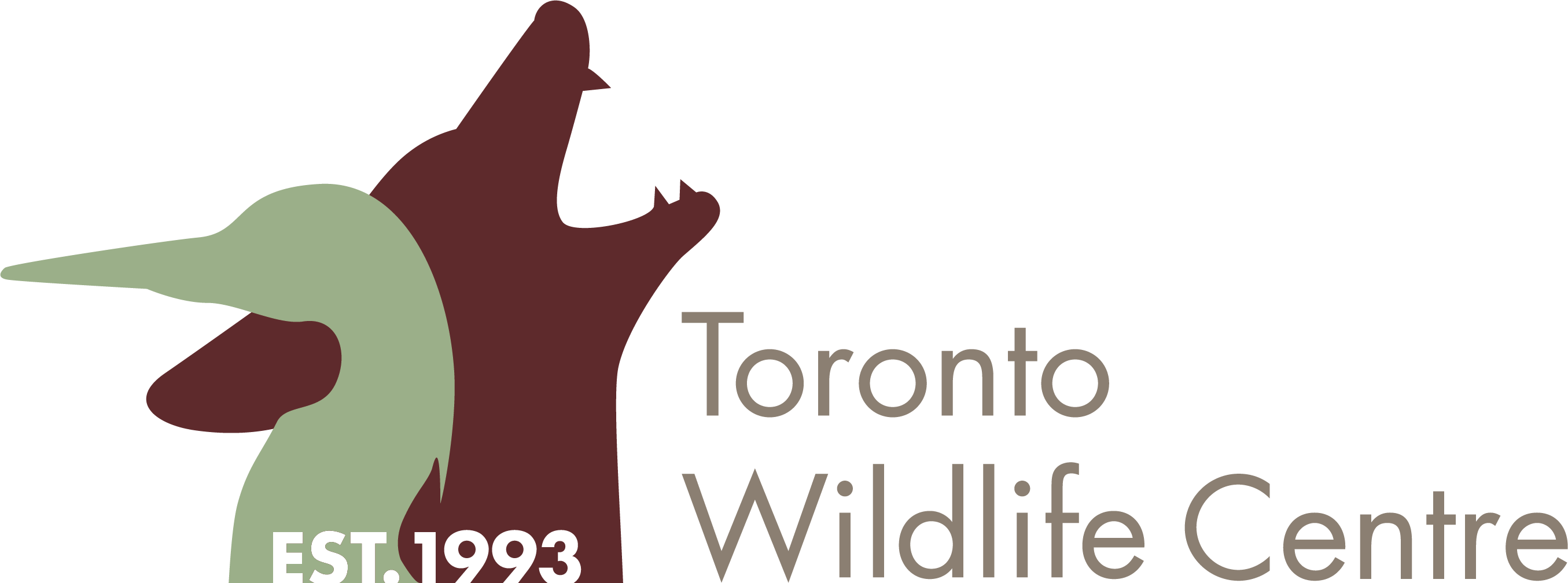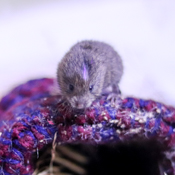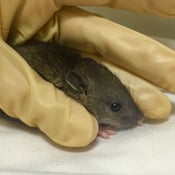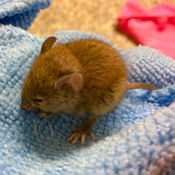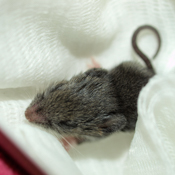Ontario is home to several rodent species, but many of them rarely encounter people. Some of the most common small rodent species Toronto Wildlife Centre receives calls about are house mice, deer mice, Norway rats, and meadow voles. While the nesting strategies of these species differ, they are similar enough that we can group them together to use the information here as a guide.
How to Help Orphaned Mice, Rats, and Voles
Are you sure they’re a baby mouse, rat or vole?
Older babies of these species can look like their adult counterparts with a larger head in proportion to their body. Depending on species, their fur may be brownish grey all over or may have a distinct two-toned colouration, white on the belly, and brown or reddish-brown on the back. In all cases, they will have the classic and well-known lightly furred, or hairless, tail. Baby mice and voles are typically less than 4 inches long, while baby rats are larger.
Newborn babies from these species are naked, blind and deaf, and can be distinguished from other babies by their small size (1-2 inches long), and transparent toenails (unlike baby squirrels which have black toenails).
Not sure the baby you’ve found is a mouse, rat or vole? Go back to our species selection page.
Get the Baby Mouse, Rat, or Vole Contained
To keep the baby safe while you figure out how to help them, put them in a small cardboard box with a soft towel or t-shirt. Even on a warm day babies can get cold, so give them a heat source like:
- a clean sock filled with dry, uncooked rice, and microwaved for one minute
- a plastic bottle from the recycling bin filled with hot tap water and covered with a facecloth or sock
- or; an electric heating pad set to “LOW” and placed under half of the box.
Do not give them any food or water – right now, keeping them warm in a dark and quiet place is more important.
Are Any of the Babies Injured?
A baby mouse, rat or vole with any of the following signs needs medical attention:
- There are obvious wounds or blood on their body
- They have had contact with a cat – even with no obvious injuries, this is a medical emergency for baby rodents
- There are lots of bugs or insects crawling all over them
- They appear lethargic, limp, or not moving
Keep the baby warm, and in a dark and quiet place. Don’t give them any food or water. Contact a wildlife rehabilitator right away.
How Did You Find the Baby Mouse, Rat or Vole?
- I accidentally disturbed a nest full of babies [Click Here]
- I found the baby rodent alone outside of a nest [Click Here]
